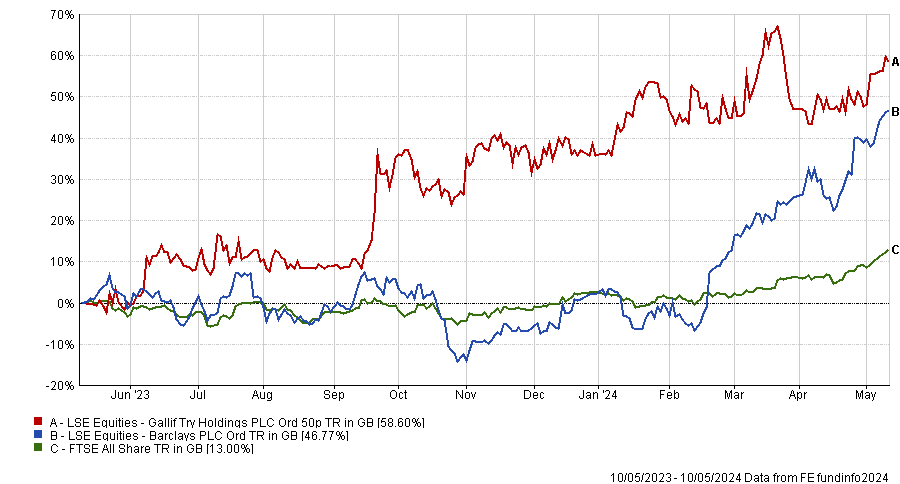Catalysts to reignite the UK equity market are all coming in to land at once, like planes at Heathrow Airport, and the stock market itself is finally taking off.
That’s the view of James Lowen, who has managed JOHCM UK Equity Income with Clive Beagles for 20 years. “It feels like there are lots of planes stacking up, so that each of them is a catalyst. Some have already landed, some are approaching the runway, but we’re surrounded by catalysts: inflation falling, [imminent] interest rate [cuts], GDP being better than expected, companies performing well, mergers and acquisitions, buybacks. Now it really feels like it's happening.”
More distant prospects (planes still in mid-air, circling the runway) include the abolition of stamp duty, a move by politicians to compel pension funds to invest more in the UK, the tide of outflows reversing course, a rebirth of IPOs after valuations return to more normal levels and greater political certainty in the aftermath of the next general election, he said.
Yet the rising tide of the UK equity market recovery will not lift all stocks equally, Lowen warned.
Britain’s stock market is one of two halves. We have our own ‘Magnificent Seven’ this side of the Atlantic, although ‘magnificent’ is a misnomer because Lowen thinks they are overvalued.
He singled out AstraZeneca, GSK, Diageo, Unilever, LSEG, British American Tobacco and RELX as the “expensive defensives”.
“I think this is this is a big danger lurking under the surface,” he cautioned. “They make up a fifth of the FTSE 100 so anyone buying a tracker, this is what they’re getting and those seven stocks are very expensive.”
RELX is trading on a price to 2024 consensus earnings ratio of 28x, while LSEG is trading at 25x.
To put those numbers into context, Lowen said he sells stocks when they reach a price to earnings multiple of 10-12x and most of his holdings are trading at 5-8x.
“Some of the seven haven’t delivered, some of them have got quite high leverage,” he continued. “People have herded to them because they feel safe in them, because you’re not likely to see a profit warning from RELX.”
To participate in the continued upswing in UK equities that Lowen anticipates, he believes investors should avoid the large, expensive defensives and gravitate instead towards banks and insurers, miners, oil, domestic growth stories and small-caps.
Banks have been the most profitable part of the JOHCM UK Equity Income fund’s portfolio over the past year, contributing 150-200 basis points of performance but they are still cheap, he argued. Banks have just had their best results season for 20 years and they have given clear guidance on capital allocation to shareholders, he said.
Barclays’ share price on 1 January 2024 was £1.54. It was trading at less than half its book value of £3.31, which Lowen described as “ludicrous”.
The share price had risen to £2.16 by 14 May 2024 and Barclays has paid a 6p per share dividend, but it is still “ludicrously cheap” compared to its 2026 book value of £4.85, he said.
Unlike banks, insurers have yet to start recovering. “If we’re in a greyhound race, [insurers] haven’t left the trap shed but some of the other things have got to the first corner,” Lowen said.
Performance of Barclays and Galliford Try vs FTSE All Share over 1yr

Source: FE Analytics
JOHCM UK Equity Income’s mining stocks have risen from an incredibly low base. Galliford Try Holdings outperformed the FTSE All Share by 10% during the first three months of this year, but before that it was trading at less than cash, which Lowen described as “absolutely astonishing” given that this is a company that makes £25m a year. It is at the “foothills” of its recovery, he added.
“It’s becoming clear that the UK is lifting off but you’ve got to make sure you’ve got the right UK exposure,” Lowen concluded.
Performance of fund vs sector and benchmark over 20yrs

Source: FE Analytics





